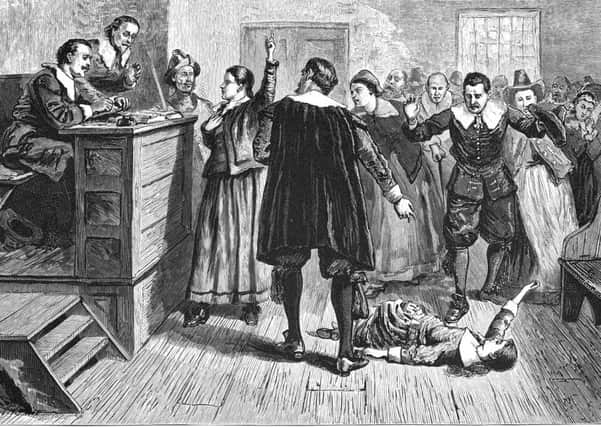All of them witches: The witch finder of Pollokshaws


As a wave of hysteria spread throughout colonial Massachusetts, a special court convened in Salem to hear the cases; the first convicted witch, Bridget Bishop, was hanged that June.
Eighteen others followed Bishop to Salem’s Gallows Hill, while some 150 more men, women and children were accused over the next several months.
Advertisement
Hide AdAdvertisement
Hide AdBy September 1692, the hysteria had begun to abate and public opinion turned against the trials. Though the Massachusetts General Court later annulled guilty verdicts against accused witches and granted indemnities to their families, bitterness lingered in the community, and the painful legacy of the Salem witch trials would endure for centuries.
A well-known story but 15 years previous, Pollok was home to its own trial in 1677 when an accusation of witchcraft centred on the Maxwell family.
Sir George Maxwell of Pollock was an avid witch hunter and had just returned from one such hunt when a young serving girl from Pollokshaws known as Janet Douglas arrived at his Pollok estate.
Not longer after, Sir George became very ill with severe pain in his right side.
Advertisement
Hide AdAdvertisement
Hide AdJanet miraculously regained the power of speech and pointed the finger at five people, including a 14-year-old girl, accusing them of witchcraft being responsible for the Sir George’s sickness.
She accused Polloktoun resident Janet Mathie, her son John Stewart, her fourteen-year-old daughter Annabil along with her friends Bessie Weir, Margerey Craig and Margaret Jackson.
A wax figure with pins stuck in the side was apparently found in Mathie’s house and Janet was imprisoned.
Sir George was said to have recovered but later fell sick again. On Janet Douglas’s advice another search of the house took place and a second effigy was found.
Advertisement
Hide AdAdvertisement
Hide AdAll the accused were searched for ‘insensible marks’ of which many were found. These were known to marks of the Devil.
Confessions of meeting in secret and consorting with the devil were obtained and trials took place.
All were condemned to burn apart from Annabil who because of her young age, was spared her life and instead imprisoned.
Like the hysterical teenagers who sustained the Salem witch hunts in the US, Douglas is said to have held power as “a witchfinder” over the residents of Polloktoun.
The town was eventually demolished in 1798, disappearing from maps of Glasgow.
Coming up: The ghostly goings-on at Govanhill Baths